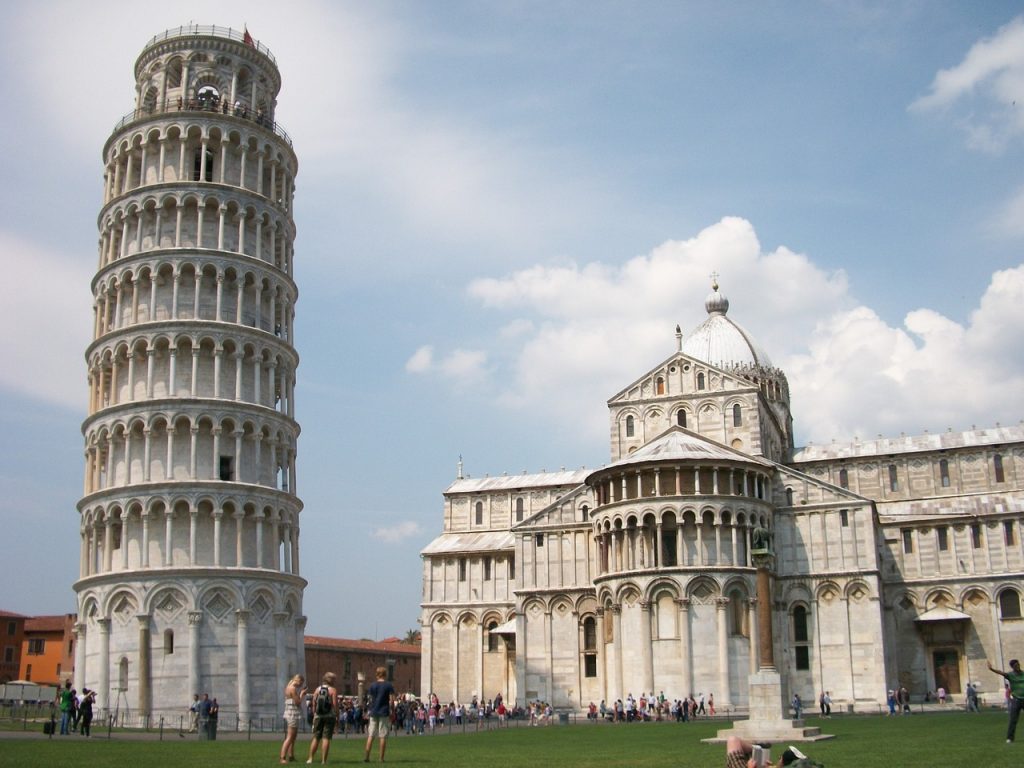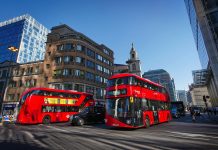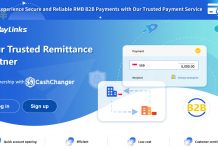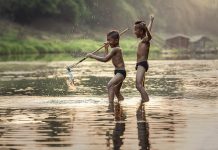Best Attractions in Europe for Travellers – Compare & get latest best Exchange rates #SGDEUR #EURUSD #EUR #Euro #SingEuro https://cashchanger.co/singapore/sgd-to-eur
-
Leaning Tower of Pisa
Package: Leaning Tower of Pisa Skip-the-line Admission in Italy
Promotion: SGD$ 36.00 (Book here)Torre pendente di Pisa – the Tower of Pisa is the campanile, or freestanding bell tower, of Pisa Cathedral. It is known for its nearly four-degree lean, the result of an unstable foundation.

Leaning Tower of Pisa - The tower is one of three structures in the Pisa’s Cathedral Square (Piazza del Duomo), which includes the cathedral and Pisa Baptistry. The height of the tower is 55.86 metres (183 feet 3 inches) from the ground on the low side and 56.67 m (185 ft 11 in) on the high side.
- The width of the walls at the base is 2.44 m (8 ft 0 in). Its weight is estimated at 14,500 tonnes (16,000 short tons). The tower has 296 or 294 steps; the seventh floor has two fewer steps on the north-facing staircase.
- The tower began to lean during construction in the 12th century, due to soft ground which could not properly support the structure’s weight. It worsened through the completion of construction in the 14th century.
- By 1990, the tilt had reached 5.5 degrees. The structure was stabilized by remedial work between 1993 and 2001, which reduced the tilt to 3.97 degrees.
-
Neuschwanstein Castle
Schloss Neuschwanstein – is a 19th-century historicist palace on a rugged hill above the village of Hohenschwangau near Füssen in southwest Bavaria, Germany.

Neuschwanstein Castle - The palace was commissioned by King Ludwig II of Bavaria as a retreat and in honour of Richard Wagner. Ludwig chose to pay for the palace out of his personal fortune and by means of extensive borrowing, rather than Bavarian public funds. Construction began in 1869, but was never fully completed.
- The castle was intended as a private residence for the King, until he died in 1886. It was open to the public shortly after his death. Since then more than 61 million people have visited Neuschwanstein Castle.
- In the Middle Ages, three castles overlooked the villages. One was called Schwanstein Castle. In 1832, Ludwig’s father King Maximilian II of Bavaria bought its ruins to replace them with the comfortable neo-Gothic palace known as Hohenschwangau Castle.
- Finished in 1837, the palace became his family’s summer residence, and his elder son Ludwig (born 1845) spent a large part of his childhood here.
- More than 1.3 million people visit annually, with as many as 6,000 per day in the summer.
-
Eiffel Tower tour Eiffel
Package: Eiffel Tower Skip-the-Line Ticket
Promotion: SGD$ 56.09 (Book here)UNESCO World Heritage Site since 1991 – is a wrought-iron lattice tower on the Champ de Mars in Paris, France. It is named after the engineer Gustave Eiffel, whose company designed and built the tower.

Eiffel Tower - Locally nicknamed “La dame de fer” (French for “Iron Lady”), it was constructed from 1887 to 1889 as the centerpiece of the 1889 World’s Fair. Although initially criticised by some of France’s leading artists and intellectuals for its design, it has since become a global cultural icon of France and one of the most recognisable structures in the world.
- The Eiffel Tower is the most visited monument with an entrance fee in the world: 6.91 million people ascended it in 2015. It was designated a monument historique in 1964,
- The tower is 330 metres (1,083 ft) tall, about the same height as an 81-storey building, and the tallest structure in Paris. Its base is square, measuring 125 metres (410 ft) on each side.
- During its construction, the Eiffel Tower surpassed the Washington Monument to become the tallest human-made structure in the world, a title it held for 41 years until the Chrysler Building in New York City was finished in 1930.
- It was the first structure in the world to surpass both the 200-metre and 300-metre mark in height. Due to the addition of a broadcasting aerial at the top of the tower in 1957, it is now taller than the Chrysler Building by 5.2 metres (17 ft).
- Excluding transmitters, the Eiffel Tower is the second tallest free-standing structure in France after the Millau Viaduct.
-
Venice Canals, Grand Canal, Italy Canal Grando
Package: Venice Gondola Ride
Promotion: SGD$ 47.45 (Book here)A channel in Venice, Italy. It forms one of the major water-traffic corridors in the city. One end of the canal leads into the lagoon near the Santa Lucia railway station and the other end leads into the basin at San Marco; in between, it makes a large reverse-S shape through the central districts (sestieri) of Venice.

Venice Canals, Grand Canal - It is 3.8 km (2.4 mi) long, and 30 to 90 m (98 to 295 ft) wide, with an average depth of 5 meters (16 feet).
- The banks of the Grand Canal are lined with more than 170 buildings, most of which date from the 13th to the 18th century, and demonstrate the welfare and art created by the Republic of Venice. The noble Venetian families faced huge expenses to show off their richness in suitable palazzos; this contest reveals the citizens’ pride and the deep bond with the lagoon.
- Amongst the many are the Palazzi Barbaro, Ca’ Rezzonico, Ca’ d’Oro, Palazzo Dario, Ca’ Foscari, Palazzo Barbarigo, and to Palazzo Venier dei Leoni, housing the Peggy Guggenheim Collection. The churches along the canal include the basilica of Santa Maria della Salute. Centuries-old traditions, such as the Historical Regatta, are perpetuated every year along the Canal.
- Most of the city’s traffic goes along the Canal rather than across it, only one bridge crossed the canal until the 19th century, the Rialto Bridge. There are currently three more bridges, the Ponte degli Scalzi, the Ponte dell’Accademia, and the controversial Ponte della Costituzione from 2008, designed by Santiago Calatrava, connecting the train station to Piazzale Roma, one of the few places in Venice where buses and cars can enter.
-
The Alhambra and Generalife Gardens, Spain
Package: Alhambra Guided Tour with Nasrid Palaces and Small Group Option
Promotion: SGD$ 64.70 (Book here)A summer palace and country estate of the Nasrid rulers of the Emirate of Granada in Al-Andalus. It is located directly east of and uphill from the Alhambra palace complex in Granada, Spain.

Alhambra, Generalife Gardens - In the Nasrid period, the Generalife was an almunia (from Arabic al-munya, meaning “farm”), a country villa that was used both as a private retreat by elites as well as a farming estate with agricultural functions. The creation of such rural estates and gardens by rulers and elites in al-Andalus dated back to the Umayyad period (8th-10th centuries).
- Such estates are also found in some historic cities of North Africa, such as the Agdal Gardens of Marrakesh, which have survived to the present day. Their existence in Granada is recorded as early as the Zirid period (11th century).
- Other Nasrid-period examples of this type were located on the nearby mountainside, such as the Alijares Palace and the Dar al-‘Arusa (both probably from the 14th century), as well as in other parts of Granada, such as the Alcázar Genil and the Cuarto Real de Santo Domingo (both from the 13th century, the former being originally an Almohad construction).
-
Berlin’s Brandenburg Gate, Germany Brandenburger Tor
Package: Evening Bus Tour in Berlin
Promotion: SGD$ 33.85 (Book here)An 18th-century neoclassical monument in Berlin, built on the orders of Prussian king Frederick William II after restoring the Orangist power by suppressing the Dutch popular unrest.

Brandenburg Gate - One of the best-known landmarks of Germany, it was built on the site of a former city gate that marked the start of the road from Berlin to the town of Brandenburg an der Havel, which used to be the capital of the Margraviate of Brandenburg.
- It is located in the western part of the city centre of Berlin within Mitte, at the junction of Unter den Linden and Ebertstraße, immediately west of the Pariser Platz. One block to the north stands the Reichstag building, which houses the German parliament (Bundestag).
- The gate is the monumental entry to Unter den Linden, a boulevard of linden trees which led directly to the royal City Palace of the Prussian monarchs.
- Throughout its existence, the Brandenburg Gate was often a site for major historical events and is today considered not only as a symbol of the tumultuous histories of Germany and Europe, but also of European unity and peace.
-
Colosseum, Italy Colosseo
Package: Colosseum Ticket in Rome with Access to Roman Forum and Palatine Hill
Promotion: SGD$ 30.19 (Book here)An oval amphitheatre in the centre of the city of Rome, Italy, just east of the Roman Forum. It is the largest ancient amphitheatre ever built, and is still the largest standing amphitheatre in the world today, despite its age.

Colosseum - Construction began under the emperor Vespasian (r. 69–79 AD) in 72 and was completed in 80 AD under his successor and heir, Titus (r. 79–81). Further modifications were made during the reign of Domitian (r. 81–96).
- The three emperors that were patrons of the work are known as the Flavian dynasty, and the amphitheatre was named the Flavian Amphitheatre by later classicists and archaeologists for its association with their family name (Flavius).
- The Colosseum is built of travertine limestone, tuff (volcanic rock), and brick-faced concrete. It could hold an estimated 50,000 to 80,000 spectators at various points in its history, having an average audience of some 65,000.
- It was used for gladiatorial contests and public spectacles including animal hunts, executions, re-enactments of famous battles, and dramas based on Roman mythology, and briefly mock sea battles.
- The building ceased to be used for entertainment in the early medieval era. It was later reused for such purposes as housing, workshops, quarters for a religious order, a fortress, a quarry, and a Christian shrine.
-
The Matterhorn, Switzerland
Package: Swiss Travel Pass (Mobile Pass)
Promotion: SGD$ 337.49 (Book here)A mountain of the Alps, straddling the main watershed and border between Switzerland and Italy. It is a large, near-symmetric pyramidal peak in the extended Monte Rosa area of the Pennine Alps, whose summit is 4,478 meters (14,692 ft) high, making it one of the highest summits in the Alps and Europe.

The Matterhorn, Switzerland - The four steep faces, rising above the surrounding glaciers, face the four compass points and are split by the Hörnli, Furggen, Leone/Lion, and Zmutt ridges. The mountain overlooks the Swiss town of Zermatt, in the canton of Valais, to the northeast; and the Italian town of Breuil-Cervinia in the Aosta Valley to the south.
- Just east of the Matterhorn is Theodul Pass, the main passage between the two valleys on its north and south sides, which has been a trade route since the Roman Era.
- The Matterhorn was studied by Horace-Bénédict de Saussure in the late eighteenth century, who was followed by other renowned naturalists and artists, such as John Ruskin, in the 19th century.
- It remained unclimbed after most of the other great Alpine peaks had been attained and became the subject of an international competition for the summit.
-
Acropolis of Athens, Greece
An ancient citadel located on a rocky outcrop above the city of Athens contains the remains of several ancient buildings of great architectural and historical significance, the most famous being the Parthenon.

Acropolis of Athens - The word acropolis is from the Greek words ἄκρον (akron, “highest point, extremity”) and πόλις (polis, “city”). The term acropolis is generic and there are many other acropoleis in Greece.
- During ancient times the Acropolis of Athens was known also more properly as Cecropia, after the legendary serpent-man, Cecrops, the supposed first Athenian king.
- While there is evidence that the hill was inhabited as far back as the fourth millennium BC, it was Pericles (c. 495–429 BC) in the fifth century BC who coordinated the construction of the buildings whose present remains are the site’s most important ones, including the Parthenon, the Propylaea, the Erechtheion and the Temple of Athena Nike.
- The Parthenon and the other buildings were seriously damaged during the 1687 siege by the Venetians during the Morean War when gunpowder being stored in the Parthenon was hit by a Venetian bombardment and exploded.
-
The Vienna Hofburg, Austria
Package: Vienna Big Bus Hop-On Hop-Off Tours (Open-Top)
Promotion: SGD$ 45.29SGD$ 50.35(Book here)A former Habsburg palace in Innsbruck, Austria, and considered one of the three most significant cultural buildings in the country, along with the Hofburg Palace and Schönbrunn Palace in Vienna.

Vienna Hofburg, Austria - The Hofburg is the main building of a large residential complex once used by the Habsburgs that still includes the Noblewomen’s Collegiate Foundation, the Silver Chapel, the Hofkirche containing Emperor Maximilian’s cenotaph and the Schwarzen Mandern, the Theological University, the Tyrolean Folk Art Museum, Innsbruck Cathedral, the Congress, and the Hofgarten (Court Garden).
- The original Hofburg palace was constructed from several elements under Archduke Sigismund around 1460. This structure included sections of medieval fortifications that ran along the eastern city wall.
Explore more activities and promotion packages at
As usual, are you a money changer? Join us by leaving your contact here directly and stand to gain our whole suit of software and hardware for free to help digitize your business.
Missed our recent news? Catch up on news like Best Attractions in Europe for Travellers here https://stories.cashchanger.co
Compare Remittance best rates to send money from #Singapore to #Europe – https://remit.cashchanger.co/singapore/sgd-to-eur
Catch us on:
Web: https://cashchanger.co | https://remit.cashchanger.co/
Telegram: https://cashchanger.co/telegram
Facebook: https://fb.me/cashchanger
Instagram: https://www.instagram.com/cashchangercom/
#exchangerate #remittance #compareexchangerates #compareremittancerates #fxrates
With thanks and referenced from wikipedia.org























